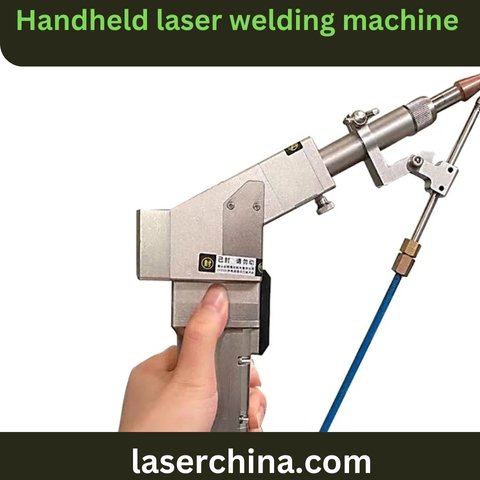In recent years, the emergence of the handheld laser welding machine has sparked curiosity and debate among manufacturing and repair professionals. Many wonder if this compact, portable tool is capable of performing the precise, high-quality welds that were once the domain of traditional welding equipment. Understanding its capabilities requires looking at the underlying technology, the materials it interacts with, and the scenarios in which it is most effectively applied.
A handheld laser welding machine operates on the principle of laser beam energy directed at a workpiece, creating a concentrated heat source that melts and fuses materials at a targeted point. Unlike conventional arc welding, which relies on electrical arcs and filler metals, laser welding generates heat through focused light energy. This allows for a smaller heat-affected zone, reduced distortion, and precise control over weld penetration. The compact size and portability of handheld models extend these benefits to environments where traditional equipment is less practical or where mobility is essential.
Material compatibility is a central factor in determining the effectiveness of handheld laser welding. Metals such as stainless steel, aluminum, and titanium respond differently to laser energy. The process can handle thin sheets with minimal warping while maintaining strong bond integrity. However, understanding the absorption rates, reflectivity, and thermal conductivity of the materials involved is crucial. Professionals must adapt parameters like laser power, pulse duration, and welding speed to achieve optimal results. In industrial repair contexts, this flexibility allows technicians to address difficult-to-reach areas, from automotive frames to heavy machinery components, without the need to dismantle the entire assembly.
Precision is another critical aspect that distinguishes handheld laser welding machines from their traditional counterparts. The focused nature of the laser beam enables highly detailed welds that are ideal for microfabrication, jewelry, and delicate metalwork. This level of control opens opportunities in industries where aesthetic quality and structural integrity must coexist. Yet, the operator’s skill remains a decisive factor. Unlike automated laser systems, handheld devices rely on steady hands, spatial awareness, and a deep understanding of welding dynamics. Proper training and experience can significantly influence the outcome, demonstrating that while the technology is advanced, human expertise is still indispensable.
Efficiency in workflow is often cited as a reason for adopting handheld laser welding machines. They reduce setup time, eliminate some post-processing steps, and allow repairs to be conducted in situ. For example, in aerospace maintenance, technicians can perform precise weld repairs without removing large components, saving both time and resources. Similarly, in automotive repair shops, handheld units allow quick spot welding that preserves surrounding material, unlike traditional welding methods that might require additional grinding, masking, or cleanup. This practical advantage extends to on-site industrial maintenance, where access and mobility are frequently limiting factors.
Heat management in handheld laser welding machines plays a pivotal role in maintaining quality. While traditional welding often results in large heat-affected zones and potential material deformation, laser welding focuses energy precisely at the joint. This minimizes thermal stress and reduces the risk of cracks, oxidation, and other metallurgical issues. By understanding how to control laser parameters and adapt to different material thicknesses, operators can consistently achieve clean, durable welds. In some applications, supplementary shielding gases are used to protect the molten pool and ensure chemical stability, further enhancing the quality of the weld.
The adaptability of handheld laser welding machines extends beyond materials and environments to include a variety of joint types. Butt joints, lap joints, and fillet welds can all be addressed with careful control of the laser beam’s focus, speed, and intensity. This versatility allows technicians to address repairs and assembly tasks that were previously challenging or impossible with traditional welding tools. The compact size of the unit and its portability also make it suitable for applications in confined spaces, intricate structures, and components mounted in complex assemblies.
Integration with digital technology has further enhanced the capabilities of handheld laser welding machines. Modern devices may include programmable settings, real-time monitoring, and feedback systems that guide operators in optimizing weld quality. Some units allow users to record parameters and replicate them across multiple welds, ensuring consistency even when working on large or repetitive projects. While fully automated systems still dominate mass production, handheld devices provide a balance between control, flexibility, and accessibility, bridging the gap between traditional manual welding and high-tech automated solutions.
Training and safety considerations are essential when discussing handheld laser welding. Operators must be familiar with laser safety protocols, protective equipment, and workspace organization. Unlike conventional welding, which primarily involves sparks and fumes, laser welding introduces high-intensity light that can cause eye injuries and burns. Awareness of beam path, reflective surfaces, and proper shielding ensures that operators can maximize the potential of handheld units while maintaining a safe environment. Proper training ensures that the machine’s advantages are realized without compromising safety.
Economic considerations also influence the decision to use a handheld laser welding machine. While initial investment may be higher than basic welding equipment, the reduction in labor, rework, and material waste can offset costs over time. The ability to perform repairs quickly on-site, maintain high-quality welds, and reduce component replacement makes handheld laser welding an attractive option for industries where precision and efficiency are paramount. For small workshops and specialized repair services, these devices can open new business opportunities, enabling service offerings that were previously unattainable.
Final Thoughts
The handheld laser welding machine is not merely a substitute for conventional welding—it is a transformative tool that expands what is possible in precision, accessibility, and efficiency. By understanding its operational principles, material interactions, and safety requirements, professionals can achieve welds that meet exacting standards while working in environments where traditional equipment is impractical. Its presence in industrial, repair, and specialized applications highlights a shift in how welding tasks are approached, demonstrating that innovation in portability and precision can redefine the boundaries of metal joining.

